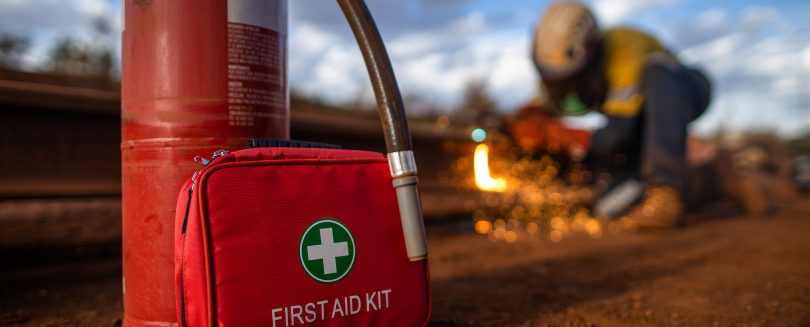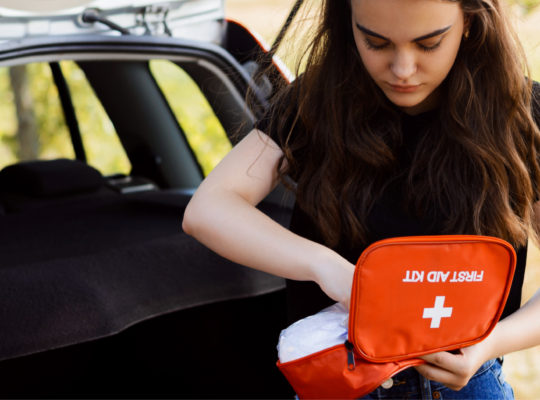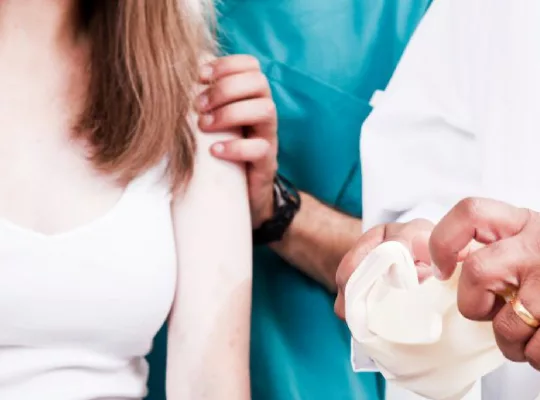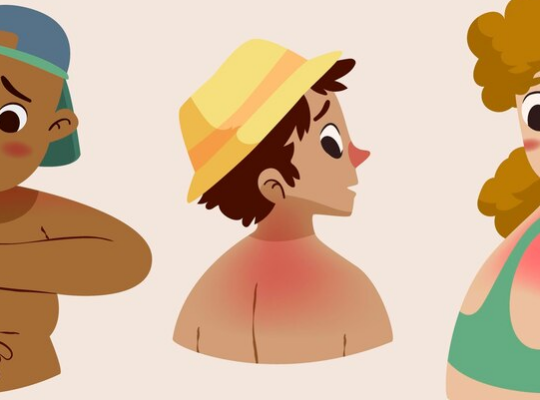What Is a Burn?
Burns result from tissue damage from heat, chemicals, radiation, electricity, friction, or the sun. Each burn ranges in severity and subsequent course of treatment. Do not determine the severity of a burn based on pain level as severe burns may be numb and could alter the first aid needed for the burns.
To determine a course of action, establish the type of burn suffered. There are four types of burns: first, second, third and fourth degree with the fourth being the most severe.
First Degree Burns:
First degree burns affect the outer layer of skin, or the epidermis. This type of burn is extremely common and is one of the mildest forms resulting, often, in the form of sunburn. The injury may be red, painful, and dry with no blisters present.
How to Treat a First-Degree Burn:
- Soothe the burn with cool water or a cool wet compress for ten minutes to relieve pain. While it may be tempting to ice the injury, do not as extreme cold can cause the burn to worsen and travel deeper into the tissue.
- Gently wash the area with unscented soap and cool water.
- Apply petroleum jelly, Aquaphor, aloe vera, or a first aid burn cream. Do not use antibiotic ointment unless prescribed by a doctor as this can cause infection. You may wrap the burn with plastic wrap or a non-adhesive pad or bandage.
- Wash the burn once or twice daily and reapply ointment if prescribed. You can continue to use a wound covering at your discretion.
Second Degree burns:
Second degree burns involve the surface layer of skin (epidermis) as well as part of the second layer (dermis). Skin may appear splotchy or white and red.
How to Treat Second-Degree Burns:
- Rinse the burn with cool water for 10-30 minutes or until the pain subsides. You may also apply a cold compress. Do not ice as it can cause the deepening of the injury.
- Remove any rings or clothing that may be in the way.
- Clean the burn with mild soap and water. Do not break the blisters as they are protecting the skin beneath. Allow them to pop on their own. Pat dry after cleaning.
- You may want to bandage the burn to protect the injury, especially if the skin or blisters are broken. Use a non-adhesive pad or bandage or a plastic wrap that will not stick to the burn.
Third- and Fourth-Degree Burns:
Skin may appear white, leathery, or charred. Third degree burns–or full-thickness burns–destroy the epidermis and dermis and may even penetrate deeper than the skin, damaging bones, muscles and/or tendons. Severe burns cause nerve damage so the burn area itself may feel numb but surrounding areas may be painful. Third degree burns are considered severe and often require skin grafts, antibiotics, or hospitalization. Seek help from a medical professional as soon as possible.
How to Administer Third-Degree Burn First Aid:
- Make sure the person is no longer in contact with the source of the burn.
- DO NOT remove clothing that may be stuck to the burn. Await help from a medical professional.
- Remove jewelry as soon as possible before the area swells.
- Do not apply any substance to the burn.
- Cover the burned area loosely with a sterile bandage or clean loose cloth.
- Seek help from a medical professional.
Keep a burn first aid kit on hand and stocked with the proper supplies to address a burn quickly and efficiently. If the burn worsens or if you suspect it is second, third or fourth degree, consult a medical professional.
https://www.medicalnewstoday.com/articles/322281
https://www.uwhealth.org/news/the-right-way-to-treat-burns
https://www.urmc.rochester.edu/burn-trauma/burn-center/tips.aspx




